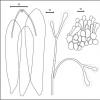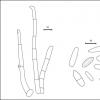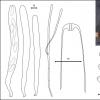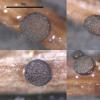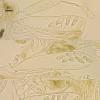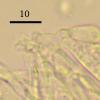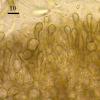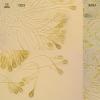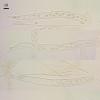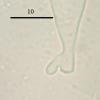
11-01-2026 20:35
Hello.A very tiny pyrenomycete sprouting sparsely

09-01-2026 17:41
Arnold BüschlenHallo, F. dilatata wird von vielen Bryoparasiten

10-01-2026 20:00
Tom SchrierHi all,We found picnidia on Protoparmeliopsis mur

07-01-2026 22:22
 Danny Newman
Danny Newman
Tatraea sp. on indet. hardwood The Swag, Great Sm

10-01-2026 01:18
 Danny Newman
Danny Newman
cf. Neovaginatispora fuckelii on indet. shrub Pre

07-01-2026 10:24
 Danny Newman
Danny Newman
Pezicula sp. on indet. hardwood Appalachian Highl

09-01-2026 10:08
 Blasco Rafael
Blasco Rafael
Hola, en el mismo habitat que la anteriorRetamaDia

08-01-2026 21:22
 Blasco Rafael
Blasco Rafael
Hola, He recogido esta muestra de Orbilia sobre Re

07-01-2026 17:29
 Marc Detollenaere
Marc Detollenaere
Dear Forum,On a barkless Populus I found some smal

10-11-2021 17:33
 Riet van Oosten
Riet van Oosten
Add-on topic http://www.ascofrance.com/forum/7059
Mud sedge litter
Nina Filippova,
05-07-2013 07:10
Mud sedge (Carex limosa) litter hosts not high fungal diversity now, or probably i was not very lucky in the search. By the way, one discomycete species was abundant and there and it is new in the list. These dark olive and black discs are probably Niptera or something close. (#4193 - https://www.cubby.com/pl/%234193/_cc2c0015396b488a8557eedbb4ab2191)
At the tips of the fallen leaves i saw some demateaceous hyphomycetes as well. And a pyrenomycete with large two-celled spores which was already spotted at cottongrass is found yet on another host. (#4194 - https://www.cubby.com/pl/%234194/_a840cf9a7137418a812842bc82bd43ec)
And it was fine to come across one new species on previously examined substrate of Sheuchzeria. It is from Rutstroemiaceae family, commonly met at Sheuchzeria leaves which are in this case are devided by black lines. Apothecia has flat disc and long stipe with velum at the base, and brightly colored (reddish-brown), easily searchable as well.(#4192 - https://www.cubby.com/pl/%234192/_7ae331edbca84218af84c0c19a47ea44)
Hans-Otto Baral,
05-07-2013 07:37

Re : Mud sedge litter
The first should be Niptetra fuscoparaphysata. I hope that the paraphysis gel is brownish and the asci with croziers.
The third I think is Rutstroemia paludosa. Please look for the croziers because of the very similar R. calopus.
Zotto
The third I think is Rutstroemia paludosa. Please look for the croziers because of the very similar R. calopus.
Zotto
Nina Filippova,
06-07-2013 06:28
Re : Mud sedge litter
It is great to have this feedback along collection!, very helpfull to me). Though i have no enough time now for work with literature, but will do comparisons later.
Niptera was with brown pigmentation at paraphyses tips, i had not showed it at the picture. The clamps not very clear, but may be, obscure clamps. There are photos of features and the description:
Apothecia discoid, sessile, up to 800 mk in diameter, 100 thick; hymenium brown, sometimes with greenish tinge, flat to some convex, outer surface dark brown to black; scattered at the surface, sometimes in groups.?
Excipulum from spherical cells, brown with incrustation, 11 in diameter at base, smaller to the edge, edge with a row of clavate cells, about 21 x 5.5; asci clavate, with small euamyloid pore, with obscure clamp, 85–115 x 15–2; paraphyses about 110 mk long, some exceeding the asci, branched, 1.8 broad at base and strongly enlarged at clavate tips (5.5), which covered with brown incrustation; spores oval, hyaline, two-celled, with not deep constriction, with not persistent gelatinous sheath and many small oil guttules, 16.2 (14–19) x 5.2 (4.7–6.2).?
Nina
Niptera was with brown pigmentation at paraphyses tips, i had not showed it at the picture. The clamps not very clear, but may be, obscure clamps. There are photos of features and the description:
Apothecia discoid, sessile, up to 800 mk in diameter, 100 thick; hymenium brown, sometimes with greenish tinge, flat to some convex, outer surface dark brown to black; scattered at the surface, sometimes in groups.?
Excipulum from spherical cells, brown with incrustation, 11 in diameter at base, smaller to the edge, edge with a row of clavate cells, about 21 x 5.5; asci clavate, with small euamyloid pore, with obscure clamp, 85–115 x 15–2; paraphyses about 110 mk long, some exceeding the asci, branched, 1.8 broad at base and strongly enlarged at clavate tips (5.5), which covered with brown incrustation; spores oval, hyaline, two-celled, with not deep constriction, with not persistent gelatinous sheath and many small oil guttules, 16.2 (14–19) x 5.2 (4.7–6.2).?
Nina
Nina Filippova,
06-07-2013 06:38
Re : Mud sedge litter
Rutstroemia's asci with clear pseudo-clamp. There is similar micro-morphologically species at Menyanthes litter, and it is also with pseudo-clamp, but the shape of apothecia seems different (at least smaller, and with deep cupulate, not flat discoid receptacle).
Here is description of the specimen on Scheuchzeria (very common, easily searchable species in sphagnum lawns at this time). (the specimen from Menyanthes is under its post)
Apothecia shallow-cupulate, stipitate, 0.5–1 cm high; receptatce flat, reddish-brown and darker edge, outer surface some paler, smooth, 0.8–5.5 mm in diameter; stipe up to 4 times longer then receptacle diameter, some enlarged to base, 3.5–5.5 mm broad in middle part, with brown tomentum at base; sometimes leaves devided by black transverse sclerified lines (not all leaves show this).?
Asci cylindrical, with thick apical dome and euamyloid narrow pore, with pseudo-clamp (small outgrowth at the base), 145–180 x 12–15.5; paraphyses cylindrical, only slightly enlarged at tips, branched and segmented, 2–3 broad in the middle; spores ellipsoid, slightly curved, mature with 1 septa, with several oil guttules, 20.2 (18.5–21.4) x 6.2 (5.8–6.5).?
Here is description of the specimen on Scheuchzeria (very common, easily searchable species in sphagnum lawns at this time). (the specimen from Menyanthes is under its post)
Apothecia shallow-cupulate, stipitate, 0.5–1 cm high; receptatce flat, reddish-brown and darker edge, outer surface some paler, smooth, 0.8–5.5 mm in diameter; stipe up to 4 times longer then receptacle diameter, some enlarged to base, 3.5–5.5 mm broad in middle part, with brown tomentum at base; sometimes leaves devided by black transverse sclerified lines (not all leaves show this).?
Asci cylindrical, with thick apical dome and euamyloid narrow pore, with pseudo-clamp (small outgrowth at the base), 145–180 x 12–15.5; paraphyses cylindrical, only slightly enlarged at tips, branched and segmented, 2–3 broad in the middle; spores ellipsoid, slightly curved, mature with 1 septa, with several oil guttules, 20.2 (18.5–21.4) x 6.2 (5.8–6.5).?
Hans-Otto Baral,
06-07-2013 09:15

Re : Mud sedge litter
Wonderful pics! Yes there are croziers. I would like you to indicate at your measurements the living state: your ascus photo shows fully turgescent asci. When you measure them dead you will not believe how small they get. Also important is to know that the paraphyses do not contain any VBs or other droplets when alive.
Rutstroemia: yes, these are simple-septate ascus bases with a large protuberance. So R. paludosa (or R. henningsiana, in case this is a synonym).
Zotto
Rutstroemia: yes, these are simple-septate ascus bases with a large protuberance. So R. paludosa (or R. henningsiana, in case this is a synonym).
Zotto
Nina Filippova,
07-07-2013 16:06
Hans-Otto Baral,
07-07-2013 16:47

Re : Mud sedge litter
Great, and you see that the spores are still alive inside the dead asci.

